2012-02-01 Texas Fireball Trajectory Solutions
by Mike Hankey, under Comets & Meteors
There was a big fireball in texas last week. Some people estimated the mass at ‘bus sized’. The meteor had a shallow entry angle, a low speed and triggered a window rattling sonic boom that was heard and felt by 100s of people. These are all positive signs that suggest a meteorite dropping fireball. The meteor was captured on 3 all sky cameras: one in Coleman TX, one in Oklahoma City Oklahoma and one in Mayhill NM. The NM camera located at New Mexico Skies Remote Observatories and operated by NASA’s Meteor Office runs a software program called ASGARD which outputs all of the azimuth and elevation angles required to compute the trajectory in a very nice email. The other two cameras are part of the Sandia Sentinel All Sky Camera network. No predetermined values were distributed with the videos so I had to reduce the solutions by hand. This process is something I accomplish with a sky mapping program and photoshop. Its not perfect, and the far away cameras have a larger margin of error. This is a version one cut of the solutions so take it with a grain of salt. I will continue to make improvements to the trajectory and fold in witness data.
I computed 3 total trajectory solutions: 1) TX & OKC 2) TX & NM 3) OK & NM. These solutions were created using the intersecting planes formula published in the Fireball Working Group by Rob Matson. Last summer with Rob’s help, I translated his tutorial into an excel spread sheet and then converted the formulas into a perl script. Its very handy for computing 3D fireball trajectory solutions. My preferred solution is the TX & OKC combo and is shown on the map in red. Here’s a map of the 3 cameras and the three unique solutions from way up high.
Here’ another view a little closer in.
And here’s a close up of the current preferred termination point. If this were correct there would be meteorites along or near this red line, closer to the side favoring the wind, most likely the southeastern side. Residents living near Greenville should be on the look out for small black rocks.
Here’s an overhead view of the preferred trajectory.
This trajectory model is based on estimated information and should be consider as just an estimate. I am willing to share my source information, so if you would like to know the underlying values used for these calculations or you would like a google earth KMZ version of these solutions, send me an email with “TX 2012 KMZ” in the subject and I will send you the KMZ.
It is my understanding that other scientists are also working on the trajectory for this fireball so there should be at least 1 more trajectory model published in the next week or two.
UPDATE 2012-02-08
Bill Cooke of NASA’s Meteor Office published his trajectory solution and also gave me the AZ / EL values he calculated for all of the cameras. I also added values for a camera from Austin thanks to Pat Branch. This input data yields five unique solutions using all possible camera combos. All five solutions are near identical. WOW.
You can download the Google Earth KMZ file here. (unzip and then open file with Google Earth).
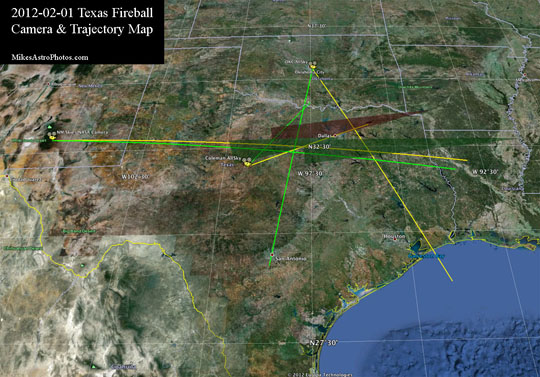
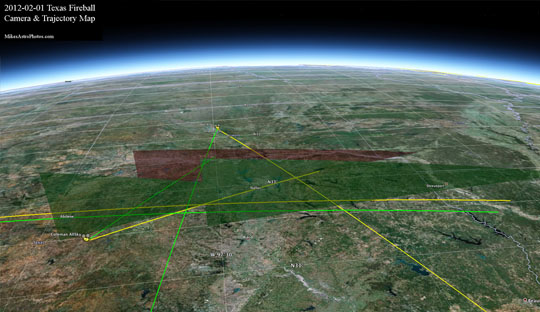
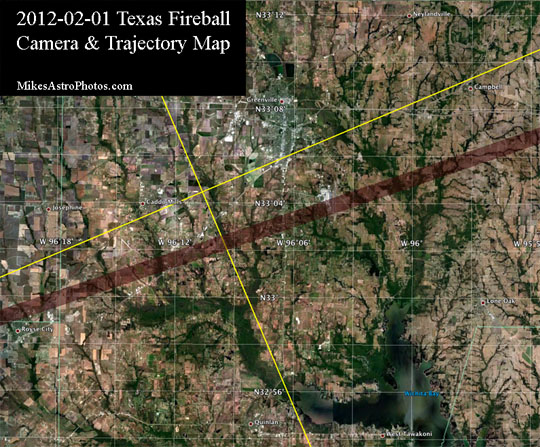
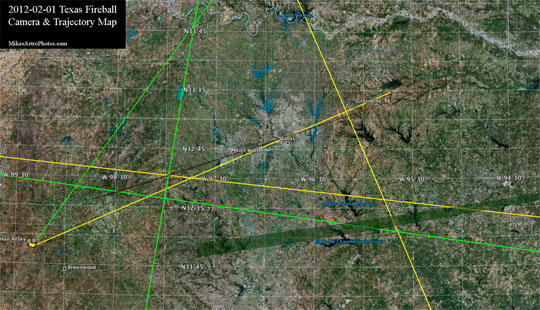
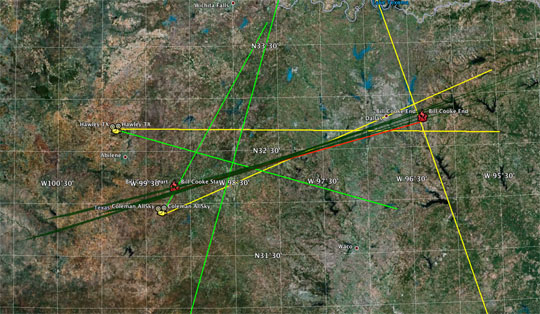
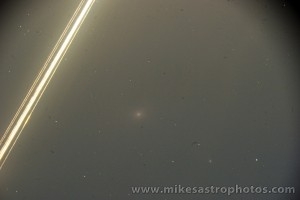
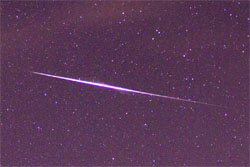
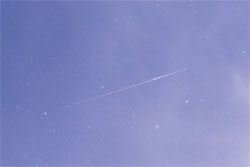
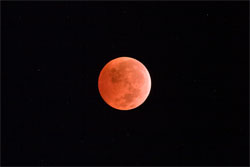
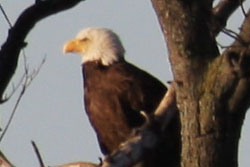

February 7th, 2012 on 10:55 pm
Very nice! And I like the projection tools. This is a powerful technique; good on you and Rob!
February 8th, 2012 on 11:46 am
Are you going on an adventure to Greenville??
February 8th, 2012 on 1:32 pm
Great Work Mike-I know the hassle. Did you get a winds a loft readout such that you may consider what drift speed and direction there may have been to fine tune the darkflight trajectory?
Elton
February 8th, 2012 on 11:41 pm
Thanks Guys! Jeff I might go, especially if something gets found first. Elton, Marc looked at the radiosnode data and said it was a pretty calm night. I suggest looking right near Bill’s end point and then following the line along the track(s). I would also give Bill’s solution the most weight, he does work for NASA and all.